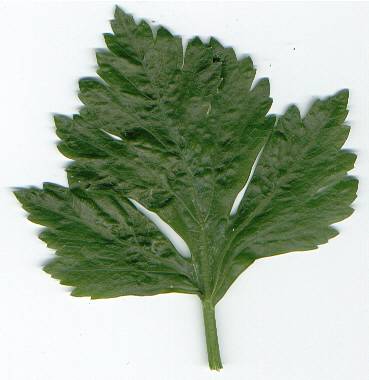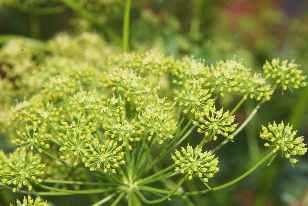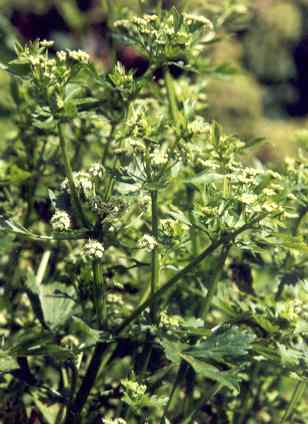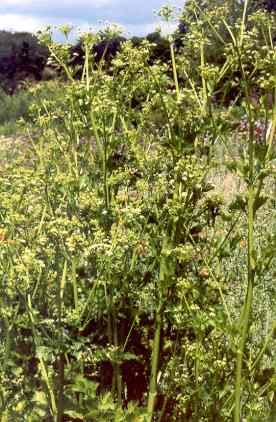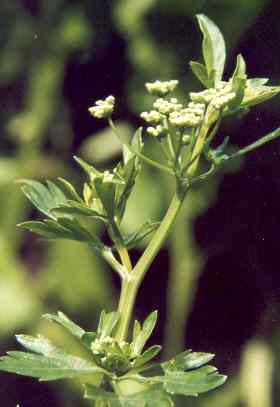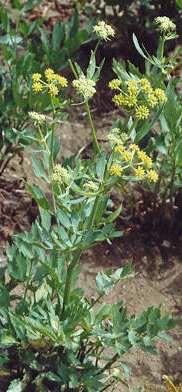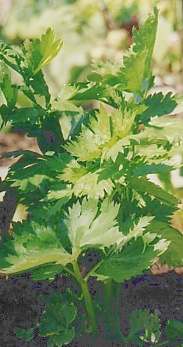| ||
|
|
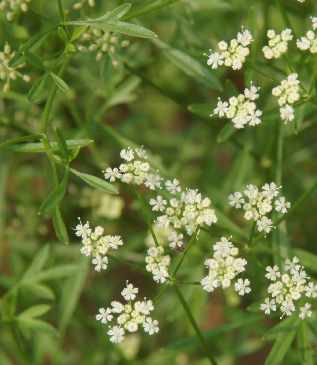
|
| Wild celery flowers |
wild parsley. In my opinion, the Greeks hardly ever made a clear distinction between celery and parsley.
The Nemean Games were conducted every second year, starting in 573, in the small city of Nemea in Southern Greece (Peloponnesus peninsula), where, according to the legend, the great hero Herakles [Ἡρακλῆς], son of Zeus [Ζεύς], had performed the first of his labours and killed the Nemean Lion. The Isthmian Games, on the other hand, were associated with the sea god Poseidon [Ποσειδῶν] and took place near the city of Corinth. The Isthmian Games were established in 581 and were celebrated in the same years as the Nemean Games, which took place only a few kilometers away. The four Pan-Hellenic religious festivals played an important historic rôle in providing a unifying cultural link between the many independent, and often warring, Greek city-states.
The Romans valued celery more for cooking than for religion; consequently, celery fruits and leaves are quite more common flavourings in the famous Apicius cookbook (see Silphion). On the other hand, much superstition was connected with it: The plant was thought to bring bad fortune under certain circumstances, and was generally associated with Death and Underworld.
Today, celery is a popular herb and vegetable in Europe; the leaves are
sometimes chopped and used as a garnish (similar to parsley), but more frequently cooked in soups or
sauces to improve the taste. For the latter purpose, the root (often in
combination with bay or boldo leaves, parsley
root and lovage leaves) is also suitable (see
parsley on the topic of herb bundles).
Additionally, the cooked root can be eaten as a vegetable. In England and the
US, the variety of celery with fleshy stems is more popular than root celery;
the latter (also called celeriac) is more commonly found on the
European continent.
Celery plays quite an important part in the Creole cookery of New Orleans, where celery stalks show up frequently in dishes like gumbo (see sassafras).
Celery fruits (often called celery seeds) have a similar, but much stronger aroma. They can be ground and mixed with salt (celery salt, though industrially it is often made from celery root extract) to make dosage easier. The fruits are slightly bitter (some say, comparable to fenugreek), which limits their usage; but even so they are a great addition to cooked vegetables. They are rarely used, though they have been common in the days of the Roman Empire. Because of their heat-resistance and unique flavour, they are a rewarding spice for those who like culinary experiments.
In North Eastern India, the dried fruits of a related plant
(radhuni) are used as a culinary spice, e. g.,
in the Bengali spice mixture panch phoron
(see nigella). Celery fruits are a
working substitute for that spice, better than anything else you will
get outside of Bengal. Celery fruits are sometimes reported in
curry powder (see curry leaves
for details), probably as a substitute for radhuni.
